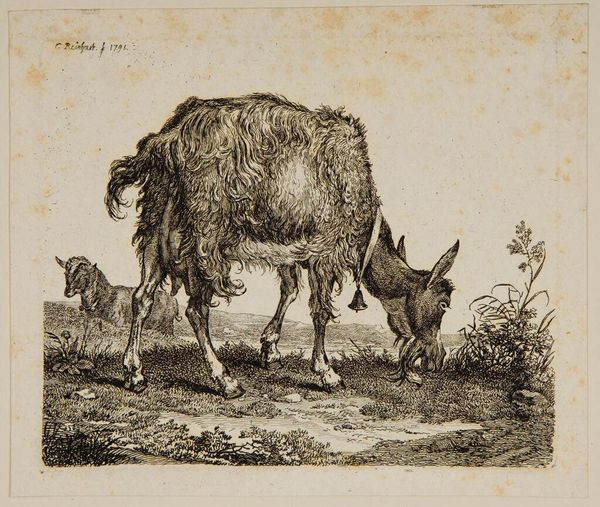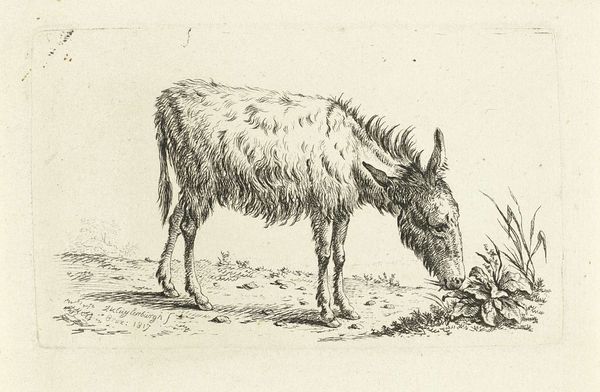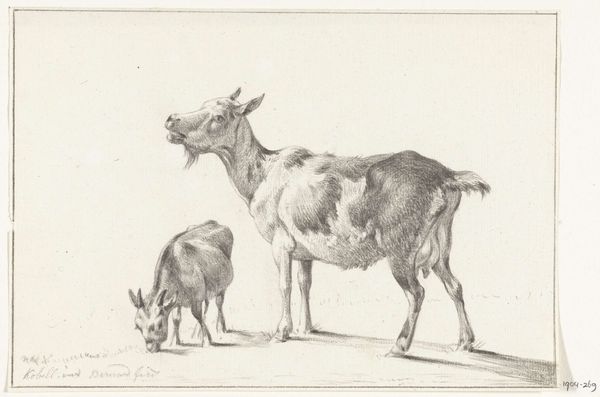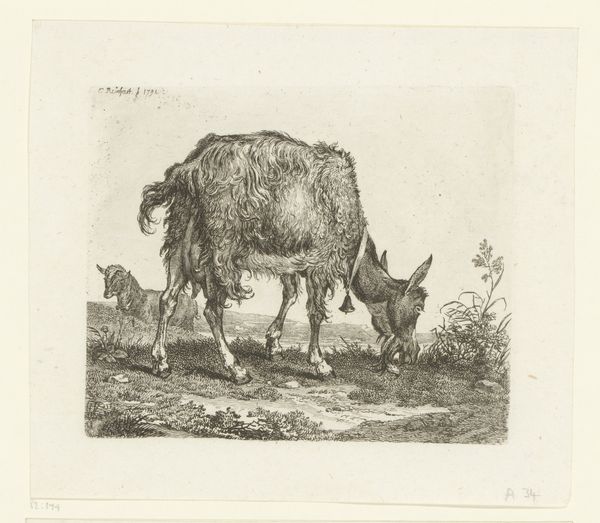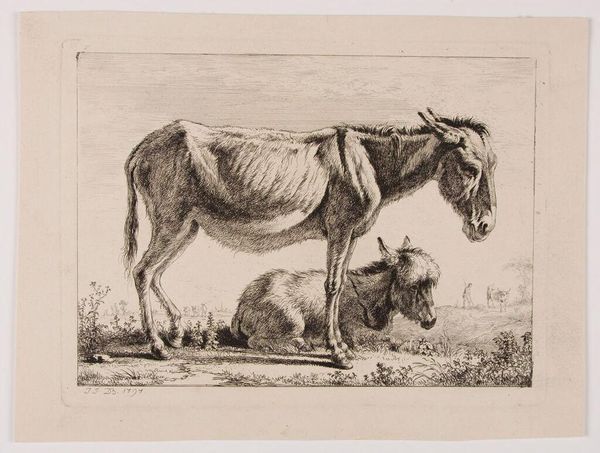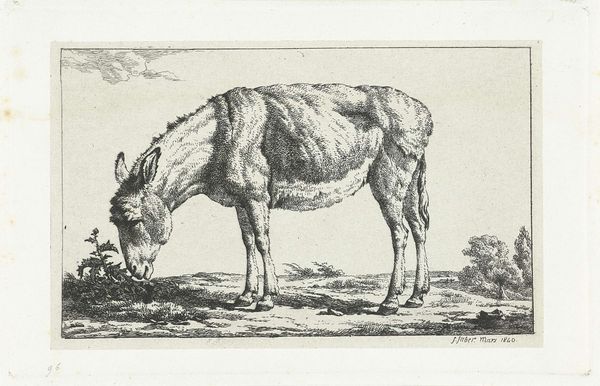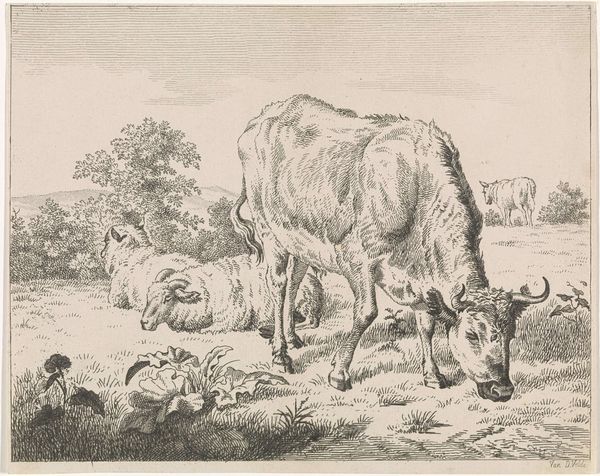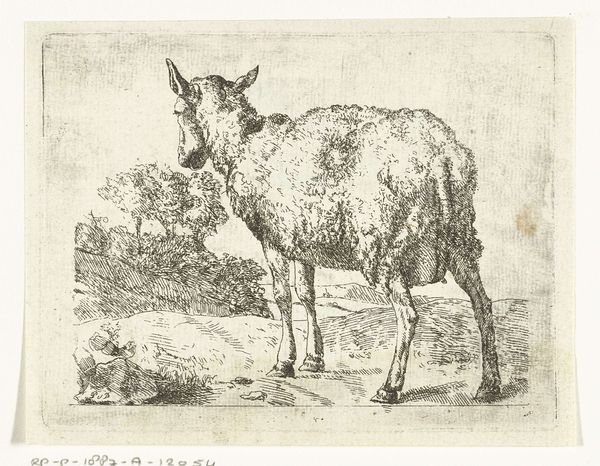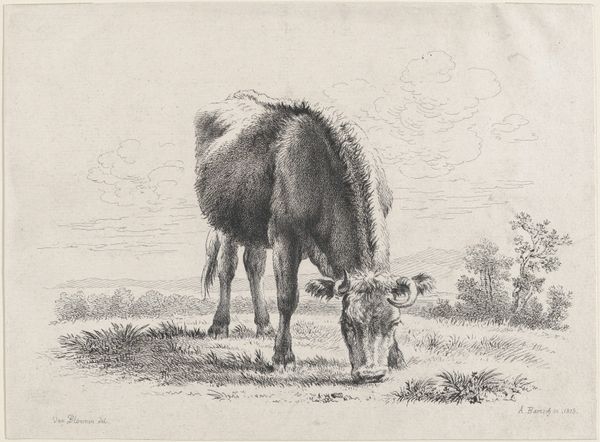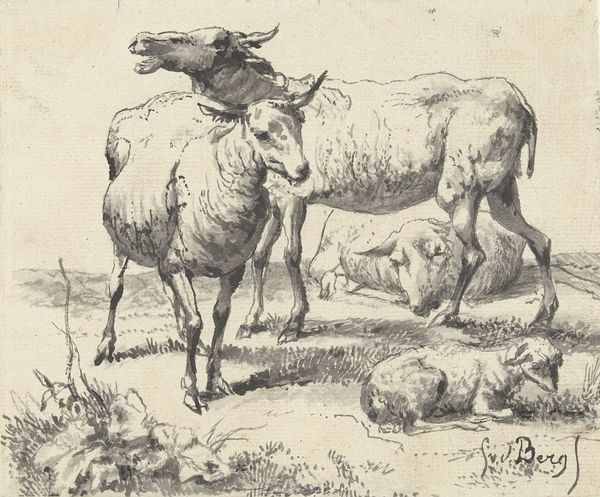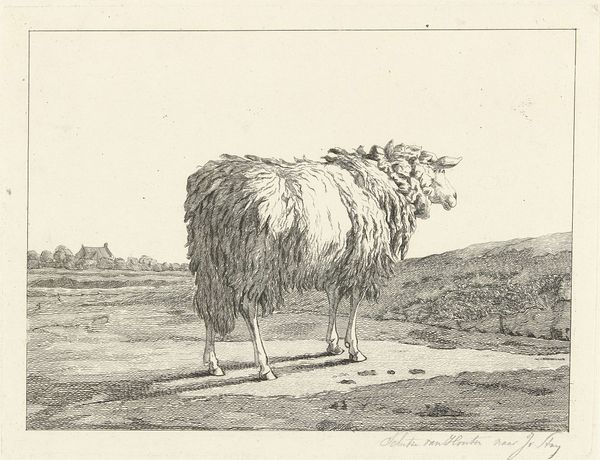
drawing, print, graphite
#
drawing
# print
#
pencil sketch
#
landscape
#
graphite
Dimensions: height 153 mm, width 200 mm
Copyright: Rijks Museum: Open Domain
Curator: Up next we have “Grazende geit met bel” or “Grazing Goat with Bell", a pencil sketch rendered as print by Diederik Jan Singendonck, sometime between 1801 and 1833. Editor: I must say, the delicate lines really capture the weight of that woolly coat. The texture practically jumps off the page. It has an almost…haptic quality to it. Curator: Indeed. Consider how Singendonck uses light and shadow to define form. Notice the tight hatching in the animal’s fur contrasting with the relative openness of the surrounding landscape. It brings a sense of balance and depth. The positioning of the goat to the left with its curved back draws the eye across the image. Editor: True, the goat acts as a visual anchor. But I'm also struck by how this simple scene reflects the changing landscape of Dutch agriculture at the turn of the 19th century. Land ownership and rural life were undergoing huge transformations, reflected even in this study of a grazing goat. It reminds us of humanity's long interdependence with domestic animals. Curator: An insightful point. One could argue that Singendonck has given his subject the gravity typically reserved for aristocratic portraiture of that period, suggesting the democratization of artistic representation. Editor: It’s amazing how a seemingly straightforward image can reflect so much about shifts in social status and class! The presence of that bell around the goat’s neck speaks to issues of property and control as well. Curator: The image encapsulates, perhaps, an important moment in European agricultural history. Editor: I'll never look at a goat the same way. Thanks for opening my eyes to such intriguing context that affects this simple sketch! Curator: And thank you for enriching our visual experience with social depth.
Comments
No comments
Be the first to comment and join the conversation on the ultimate creative platform.
